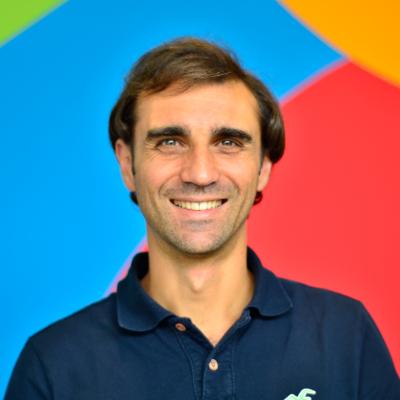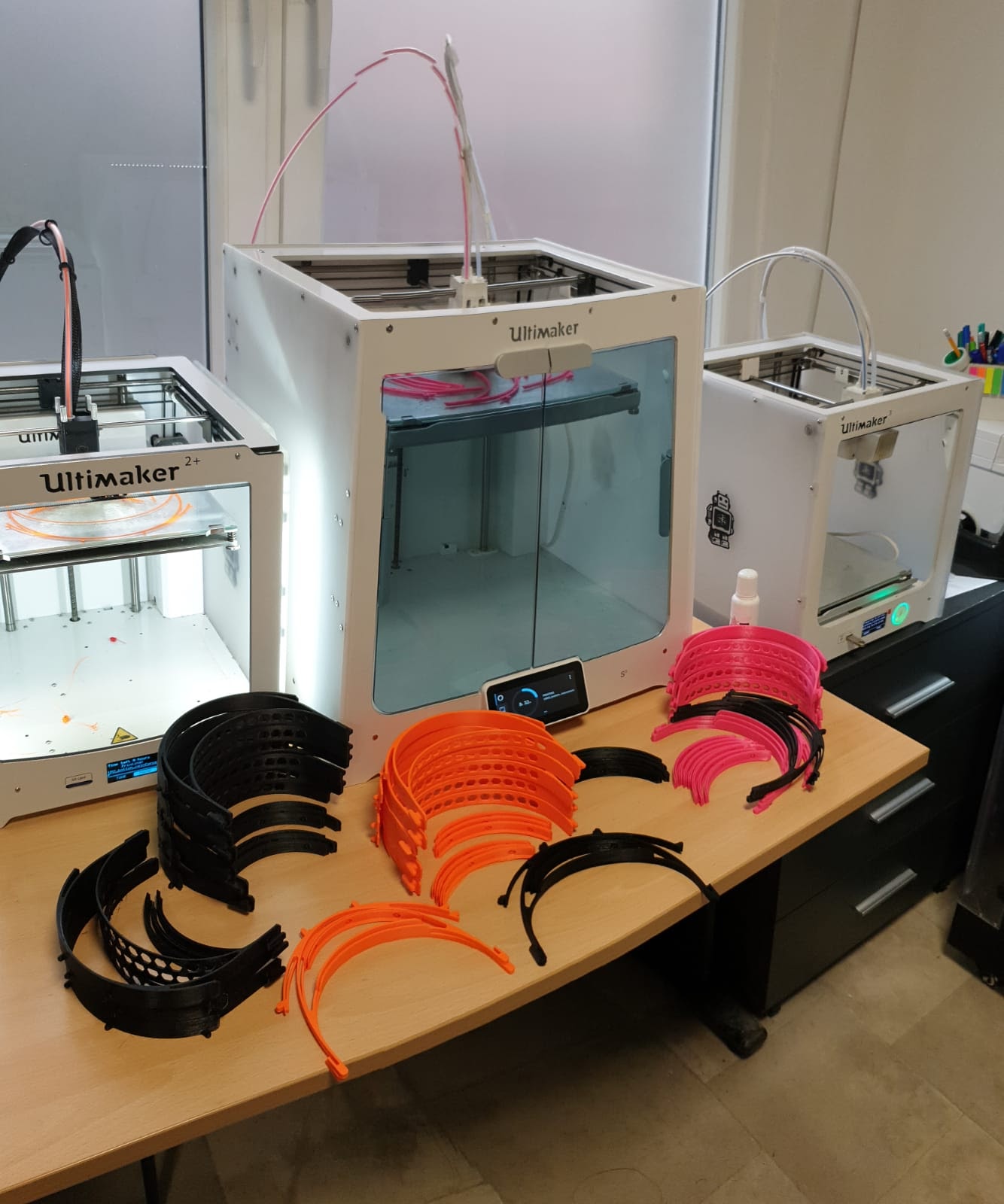The response of the Maker Movement to the COVID-19 pandemic
Worldwide, the Maker Movement has taken action by supporting healthcare professionals with the provision of medical devices and equipment. They have engaged in tackling shortages of personal protective equipment (PPE) such as face masks [1] [2] and face shields [3] [4]; specific health device components such as valves [5]; and even mechanical ventilators [6] [7] [8]. The community has thus sprung up online, calling for extended peers and volunteers globally, to address the challenges associated with the design, manufacture and replication of novel, open source, low-cost medical devices. In this time of social distancing, the Internet has facilitated the sharing of knowledge within the community, provided an important interface with doctors and health professionals, and enabled merging of expertise in various initiatives.
Open sharing of information scales up local solutions all over the world
Major initiatives to tackle the global coronavirus crisis have emerged, bringing together extended communities of makers and healthcare professionals - a major concern is the safety and the fitness for the purpose of the solution provided and thus the involvement and constant feedback of healthcare professionals is a condition sine qua non. The Helpful Engineering [9] initiative, with more than 16,000 members, and the Open Source COVID19 Medical Supplies [10], with close to 70,000 members, are two global initiatives working on multiple projects with the goal of helping a burdened medical staff. These initiatives rely on open sharing of information and knowledge via multiple online communication platforms. In this way, solutions can be easily replicated all over the world and thus scale up production in makerspaces to help local hospitals. Locally coordinated groups (e.g. Coronavirus Makers in Spain [11], the Makers Against Corona in BeNeLux [12], the Makers vs Virus in Germany [13], the Makers in Italy [14] or the Movimento Maker in Portugal [15]) are also emerging.
Hackathons, short duration events where participants pitch ideas and team up to design solutions to address the coronavirus pandemic, have also been uprising (e.g. Hack for Italy (Italy [16]), Hack the Crisis (Finland [17], and Estonia [18]), Wir Vs Virus (Germany [19]), or OpenCovid19 Initiative (France [20])). Solutions can emerge not only in the form of novel PPE and medical devices but also in the form of mobile apps for instance to map local business operating during the lockdown period or Artificial Intelligence systems for self-detection.
3D printed face shields delivered at local hospitals
The shortage of personal protective equipment (PPE), not only in hospitals but also in clinics, first responders and social workers, is one of the major issues makers have been working hard to address. In this sense, face shields, specifically designed for this purpose and available in open source, have been widely 3D printed (or laser cut) in makerspaces in Europe. From Czech Republic to Portugal, makers have been rallying to produce and deliver face shields for those working on the front lines.
Although the number of face shields can be difficult to assess in the rush for coronavirus protection, a survey to makers in six European countries (Belgium, Czech Republic, France, Portugal, Spain and UK) revealed that over half a million face shields have already been donated to local hospitals and other institutions unprepared with protective equipment.
Face shields donated by various makers’ initiatives:
- Coronavirus Makers, Spain | 350,000 face shields
- Movimento Maker, Portugal | 40,000 face shields
- 3D Crowd UK, UK | 80,000 face shields in production
- Prusa 3D, Czech Republic | 35,000 face shields
- Makers Against Corona, Belgium | 20,000 face shields
- Industra, Belgium | 20,000 face shields
- Covid 3D, France | 18,000 face shields
- Industra, Czech Republic | 3,900 face shields (+5,000 textile masks)
- VIVALab, Portugal | 4,500 face shields
3D printed valves for ventilators to keep patients breathing
Two prominent and practical outcomes of this engagement comes from Italy: the first is the report of a particular type of valve necessary for the functioning of an intensive care device being 3D printed with a production-grade selective laser sintering (SLS) 3D printer [21] for an hospital in Brescia where the stock of the mentioned valve was almost exhausted. The second is the Easy Covid19 project [22], in which a custom-made valve turned a commercially available full-face snorkelling mask into a NIV (Non-invasive ventilation) sub-intensive emergency mask:
- Shortly after Italy was affected by the COVID-19 pandemic, a hospital in the Italian city of Brescia, in the hardest-hit region for COVID-19 infections, faced a dramatic situation of running low on the stock of a specific valve much needed for the functioning of an intensive care device. As the regular supplier was not able to provide the replacement valves in time to save patients, the solution found was to replicate its design and 3D print them locally. Even if in this case the valve cannot be printed in typical personal 3D printers (for accuracy and medical compliance reasons), the story highlights the ingenuity of the solution found.
- Another practical example is the Easy Covid19 project, which turns a full-face snorkelling mask currently available in the market into a NIV (non-invasive ventilation) sub-intensive emergency mask by 3D printing a custom-made valve. The design available online allows now other individuals and organisations to replicate the invention or even to adapt its use, as it is currently being done in Czech Republic and Belgium [23]. The snorkelling mask has now also been custom adapted by makers to fit military-grade filters and thus to function as protection for medical workers.
Beyond the decentralisation of the production of small numbers of components from local-based makers, distribution issues are also being addressed. The initiatives aforementioned are also effectively making the connections between makers, suppliers, healthcare professionals, and potential financial supporters. Furthermore, these initiatives show that there are more untapped resources that can be mobilised at all times about different matters of concern. By resources we mean knowledge, skills and care. In this respect, the presence of healthcare professionals on online platforms and the release of design specifications of certain devices [24] are specially important.
Aside from fabrication of devices and equipment, DIYbio (do-it-yourself biology) communities are exploring novel methods of testing and potential vaccines for COVID-19 in non-conventional settings, bypassing academia and pharmaceutical companies [25] [26] [27]. In the midst of the COVID-19 crisis, the maker movement is injecting vitality, creativity and dedication in the fight, presenting complementary approaches and solutions to institutionalised procedures
The maker movement highlights the value of collaboration, in communities that engage all those affected by a problem or with a desire to participate in its resolution. It also highlights the ethos with which the community of makers mostly operate: ideals of openness, sharing and solidarity. These values could inspire future institutional response and arrangements in times of crisis.



